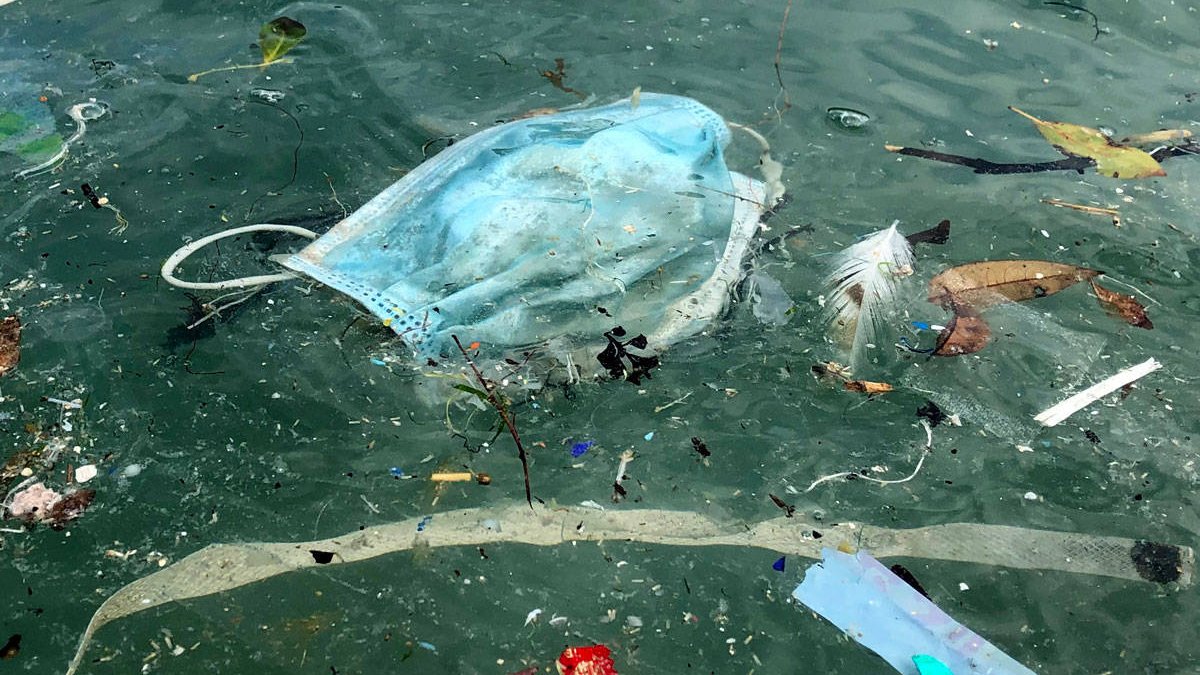In 2020, the COVID-19 pandemic struck a massive blow on the entire world, impacting physical and mental health, gunning down world economies while also defiling the environment. Although a vital measure, face masks have both a health and an unscrutinized environmental impact. A year ago, the idea that face masks, shields and wipes could lead to such mayhem couldn’t have been predicted.
In this unprecedented outbreak, face masks, till vaccination-driven herd immunity kicks in, are acting as our first line of defence. The need to wear a mask in public can’t be overstated. Yet we also can’t overlook the environmental degradation their disposal is resulting in. Out on the streets, you might see more face masks discarded on the pavement than on people’s faces.
According to a study conducted by the National Library of Medicine, close to 3.4 billion face masks and shields are used and discarded every day. Assuming that each mask is 4 grams, that’s 14,400 metric tonnes of waste being produced every day just from face masks.
Face Masks and Disposal
Most face masks in the market are single-use and as such, there is no alternate way of discarding them, so masks end up in landfills. Recycling too has to be ruled out. The reason for that is two-fold. One, used face masks might be contaminated and could possibly result in the transmission of infection in the recycling system. Two, unlike what we are led to believe, cloth masks aren’t entirely made out of cloth. In reality, a variety of slow degrading plastics called polypropylene are used alongside biodegradable cloth. Experts believe that masks will not be going anywhere any time soon. These claims are based on the fact that the plastic in these masks breaks down into tiny pieces of micro and nano-plastic which might take centuries to degrade.
The Dumping Ground For Used Face Masks: Seas, Rivers and Mountains
In the case that we throw our masks in the trash, they find a home in a landfill for years and years to come. But that’s not where it ends. These days an increasing number of masks are being traced in the rivers and seas. According to a report by Environmental Advances, a face mask can release up to 173,000 plastic microfibers into the seas every day.

Littered face masks flow down rivers which then empty into the seas. The pollution caused by this is becoming clearly visible now. Discarded face masks and their remains are being found in rivers in Bangladesh and Jakarta and on the coasts of Kenya and Honk Kong. In many places, improperly disposed of masks are clogging city drains and sewage incinerators. Mask loops in addition to masks are posing a danger to marine life- the plastic in the masks enter their bodies and become an inseparable part of the food chain; and loops are a choking hazard for marine fauna.
What can you do about the mask problem?
Plastic pollution and the growing waste problem have been issues that need our strenuous attention for much longer than 2020. Today, climate change has become a catastrophic threat to the existence of life on Earth. Plastics have been one of the primary anthropogenic causes for furthering global warming. So there’s an urgent need to start now more than ever.
Here are some things you can do on your end to limit face mask pollution:
- Dispose of face masks properly, bag your PPE kits before throwing them.
- Wear a washable cloth mask whenever possible, you can always make your own.
- Talk more about this issue. Higher levels of awareness will better our chances for making improvements in the industry.
To read more about the COVID-19, click here.
